#National Museum of Japanese History
Text
In celebration of seeing the first fireflies of the season:
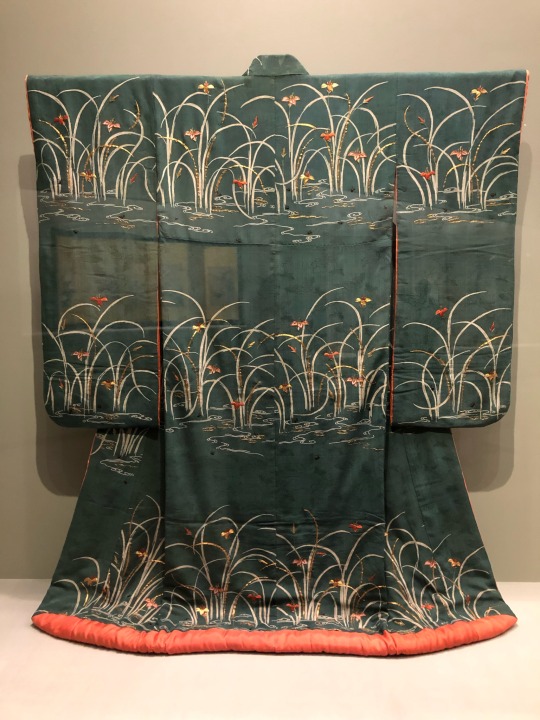
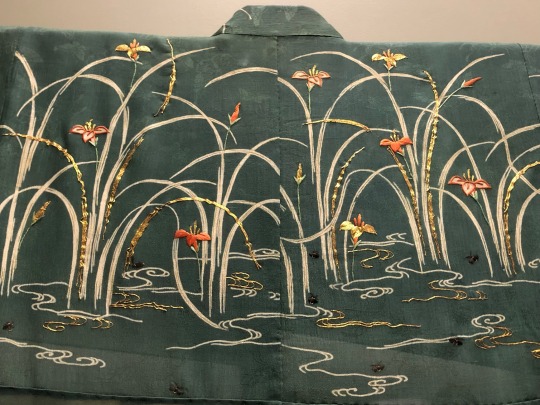
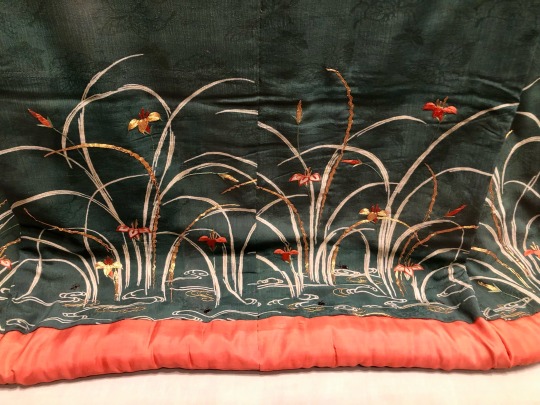

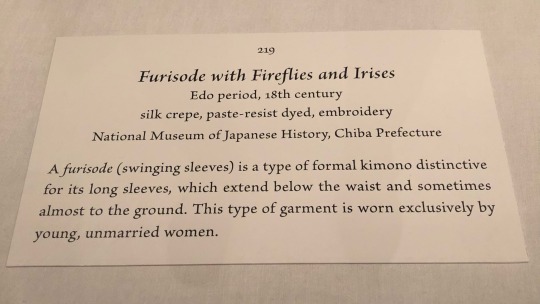
Furisode with Fireflies and Irises
Japan, Edo period, 18th century
silk crepe, paste-resist dyed, embroidery
National Museum of Japanese History (photographed on display at The Life of Animals in Japanese Art exhbition at the National Gallery of Art DC in 2019)
#Japanese art#East Asian art#Asian art#18th century art#kimono#furisode#historical costume#garment#embroidery#irises#fireflies#National Gallery of Art DC#The Life of Animals in Japanese Art#museum visit#exhibition#textiles#National Museum of Japanese History
773 notes
·
View notes
Text

Women Watching Stars, Ōta Chōu, 1936
#art#art history#Ōta Chōu#Asian art#Japanese art#East Asian art#genre art#astronomy#color on paper#Showa period#Showa era#20th century art#National Museum of Modern Art Tokyo
3K notes
·
View notes
Text
国立歴史民俗博物館

0 notes
Text

Bodhisattva Cintāmaṇicakra, 9-10th century
Heian period, Japan
Wood, single block construction
Height: 94.9
Important Cultural Property
The legend said that this statue was discovered in the sea of Tango region. The carving technique of the early Heian period can be seen on the stern face with connected eyebrows, as well as the thick and broad body structure. The scarf-like cloth (jōhaku) was draped widely which is rare to see, it leads a theory that this statue belongs to the Tendai sect.
Collection of the Nara National Museum
#Avalokitesvara#Buddhism#bodhisattva#figure#religion#kannon#Japanese#觀音#cintamanicakra#cintamani#sculpture#wood#carving#9th century#10th century#art#art history#Nara National Museum#iconography#gesture#Heian period#symbolism
290 notes
·
View notes
Text
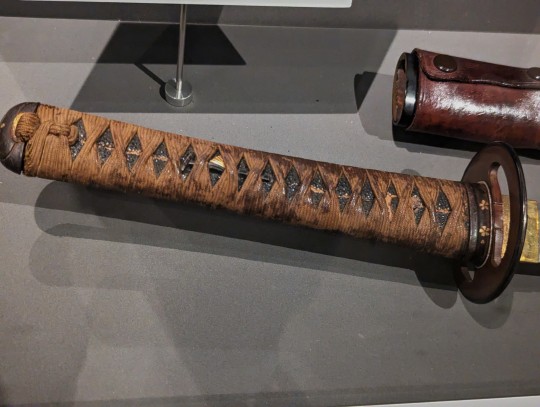

Officer's Sword from the Empire of Japan dated to 1945 on display at the National War Museum in Edinburgh Castle, Scotland
This sword was surrendered to Lieutenant Commander B. Whitcutt, Royal Naval Volunteer Reserve, by Captain Hiroshi, as part of the ceremony marking the surrender of Japanese forces in Burma, 1945. All Japanese officers in South East Asia were made to give up their swords to British officers of similar rank.
While the style of the sword fits with the 20th century Imperial Army style the blade was made in the "Shinto" period from the 17th century. This was common amongst families who had more historic blades and children who were officers in the Imperial Army. The older blades were fitted into more modern styles.
Photographs taken by myself 2023
#sword#art#20th century#empire of japan#japanese#japan#second world war#military history#national war museum#edinburgh#barbucomedie
11 notes
·
View notes
Text

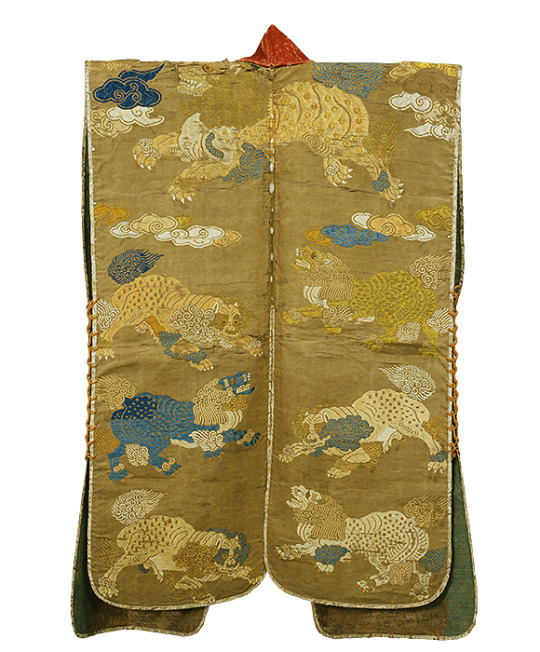

From left to right: a jinbaori surcoat with a swallowtail butterfly made for Oda Nobunaga, a jinbaori surcoat with a lion pattern made for Toyotomi Hideyoshi and a dōbuku coat with a snowflakes and ginkgo leaves pattern made for Tokugawa Ieyasu. Artist unknown, Azuchi-Momoyama period, Tokyo National Museum.
#That Azuchi-Momoyama drip hits different 😫#Oda Nobunaga#Toyotomi Hideyoshi#Tokugawa Ieyasu#I NEED to visit this museum#Tokyo National Museum#Japanese history
21 notes
·
View notes
Text

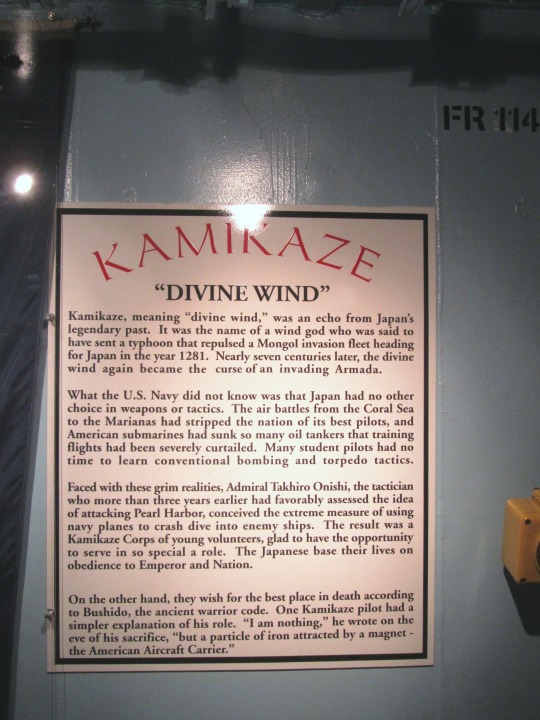
World War II: The first kamikaze attack on October 21, 1944. A Japanese fighter plane carrying a 200-kilogram (440 lb) bomb attacks HMAS Australia off Leyte Island, as the Battle of Leyte Gulf began.
#World War II#World War Two#WWII#first kamikaze attack#21 October 1944#anniversary#Japanese history#Corpus Christi#USA#USS Lexington (CV-16)#USS Lexington Museum - National Historic Landmark#summer 2011#travel#USS Lexington Museum On The Bay#engineering#tourist attraction#landmark#indoors#flag#sign#original photography#Texas
4 notes
·
View notes
Text
no, miss appleton did not single-handedly ruin japanese soy sauce forever
there's a popular post going around this week about a ghq (general headquarters, the administration of the american occupation of japan after wwii) employee, a certain ms. blanche appleton, single-handedly changing the taste of soy sauce. while her story is fascinating for sure and i await further developments on the part of the op, and had a hand in the history of soy sauce, the premise is quite a bit exaggerated, and the general narrative so far in the framing by the op somewhat problematic.
tl;dr: as with most things, this is a confluence of factors, with producers, scientists, politicians, (possibly underworld,) and administrators all having their own agency in this story. i find it unusual to sideline so many parties in favour of presenting a single foreign administrator calling the shots in the op's posts.
i've made an initial response here. i will continue my findings in a separate post here.
1. jack daniel's is swill, but it's still whiskey
i think i can distill my issues with this plot so far down to one statement in the original post:
There should be records of her policies, there should be legal documents in America which record how she apportioned out American exportation of soy beans to Japan, there should be sources talking about this woman's ability to transform Japan's soy sauce production so heavily that today only 1% of all soy sauce is made with pre-WW2 traditional techniques.
this transformative impact of one administrator is entirely overstated. this comment led me to a promo blog post where some of the original claims can be seen, and the op mentions that traditional soy sauce was made in kioke barrels, and the this method of production has dropped to about 1% now. this is true, but it appears that at least one source put the decline as starting around the end of the edo period (xvii-xix centuries). [1] sources traceable to yamaroku puts the decline more recently, at about a century ago [2, 3]
this japanese paper on fermented food production is quite clear in stating that wodden barrel production declined from the meiji period (1868-1912) onward.
江戸時代までに一般化した木桶・木樽の使用形態は、明治期以降、一般の生活や各種製造現場で近代化が進む中、コンクリートや金属、プラスチック、合成樹脂等の材質によって代替されていく。
The use of wooden vats and barrels, which had become common by the Edo period, was replaced by materials such as concrete, metal, plastic, and synthetic resin from the Meiji period onward, as modernization progressed in ordinary life and various manufacturing sites. (deepL translation)
another source from a professor on food production in japan suggests that shodoshima (where yamaroku is made) is the area that has most completely preserved the wooden vat method of production.
this survey (oguri) written by a member of the national museum of nature of science in tokyo dates the supplanting of traditional method in more industrialized regions by 1913
1913(大正2)年:栂野は「最新醤油醸造論」の中で、九州、中国地方では桶の代わりに煉瓦又は石でタンクを作り使用していると記述。
1913 (Taishō 2): Tsugano, in his "The Latest Soy Sauce Brewing Theory," wrote that in Kyushu and Chugoku regions, instead of vats, tanks were made of bricks or stone and used. (deepL translation, p.148)
1918年:西二の蔵(ヤマサ印)の建設に当たり研究中の内面塗料が完成したので、これを採用し仕込桶を角型のコンクリートタンクに改めた。
1918: The internal [coating] that was being researched for the construction of the Nishi Ni no Kura (Yamasa brand) was completed, and this was adopted and the brewing vats were replaced with square concrete tanks. (deepL translation with edits from @literaryreference, see translator's note 3, p.148)
i think it bears repetition that soy sauce production was industrializing as japan was industrializing from the meiji to early shōwa periods. as alluded to in the title, a lot of modern soy sauce is like jack daniels: industrial products that evolved from traditional methods alongside a nation's overall development.
2. babe wake up, a new semichemical soy sauce just dropped, and appleton's role in history (a corroboration of @/inneskeeper)
it seems like the plot on the original poster's part has gone to the american side, so let's try to follow the us-japan interaction but from japanese sources.
the survey cited earlier (oguri) has a lot of information that supports the original post. blanche appleton did exist, and does appear in more anecdotes from that era of the soy sauce industry.
(also, this bibliography has more sources on her time in japan, will require institutional access to japanese universities)
to start, there are two methods of semichemical soy sauce production. the first, 新式1号法 shinshiki 1-gō method (i will call it sc1) was invented in the taishō era (1912-26).
大正の末期頃になると、酸やアルカリの化学薬品を併用することによって、速醸の目的を達成しようとする研究が盛んに行われ、その代表的な「新式1号」が出現する。
Toward the end of the Taisho era, there was a flurry of research into the use of acid and alkali chemicals in combination to achieve the goal of fast brewing, and the "Shinshiki No. 1" [sc1] appeared as a representative example of such research. (deepL translation, p.158)
in the time immediately after the war, there was a shortage of supplies, and its allocation was controlled by the americans
駐留軍の総司令部 GHQ(General Head Quarter)は、1948年の春調味料の原料として「エロア資金」(占領地域経済復興資金)により、大豆ミール2万tを放出する方針を打ち出した。このことにより、その配分をめぐって醤油業界とアミノ酸業界は熾烈な競争をすることとなる。
The General Head Quarter (GHQ) of the stationed army announced a policy of releasing 20,000 tons of soybean meal as a raw material for seasonings in the spring of 1948 through the EROA (Economic Rehabilitation in Occupied Area) Fund. This led to fierce competition between the soy sauce and amino acid industries for its allocation. (deepL translation with edits by myself, p.159)
the "amino acid industry" mentioned refers to the monosodium glutamate (msg) industry (glutamate is the ion of an amino acid). essentially, in the early 20th century, both msg and soy sauce (and chemical "soy sauce") production methods have converged to all requiring many soybeans due to their protein content and fermentation properties.
this is where appleton makes her entrance:
GHQは両業界の調整窓口として、「経済安定本部」の経済科学局で調味料と乳製品の需給を担当していたミセス・ブランシェ・アップルトンをその任にあてた。アップルトンは、醤油醸造協会の茂木啓三郎とアミノ酸業界の大内鋼太郎を招いて意見を聴取し、原料の配分を「醸造醤油2、アミノ酸業界8」とすることを内定し、上司のマーカット局長に報告した。この報告内容は醸造醤油にとっては死活問題であったが、内定の根拠は次のようなものであった。
GHQ assigned Ms. Blanche Appleton, who was in charge of the supply and demand of seasonings and dairy products in the Economic and Science Section of the "Economic Stability Headquarters," (?) to serve as the coordinating contact between the two industries. Appleton invited Keizaburo Mogi of the Soy Sauce Brewers Association and Kotaro Ouchi of the amino acid industry to hear their opinions, and informally decided that the distribution of raw materials would be two for brewing soy sauce and eight for the amino acid industry, and reported this to her boss, Maj. Gen. W. F. Marquat. The content of this report was a matter of life and death for brewers' soy sauce, but the rationale for the informal decision was as follows. [...] (deepL translation with edits by myself p.159)
essentially, appleton originally intended for only 20% of the soybean meal to be handed out for soy sauce due to its relatively inefficient usage of materials compared to msg production. this would've crippled the existing soy sauce producers, and they set out to find solutions to save their industry.
醸造醤油側は、醸造醤油の「日本人の食生活における重要性や醸造醤油そのものの品質の良さ」等を強調したが、GHQはただ「脱脂大豆が有効に活用されるのはどちらか」という尺度だけで判断したのである。このような醸造醤油の存亡の危機を救ったのは、もくもくと研究に携わっていた技術陣が開発した「新式2号法」であった。本法を発明したのはキッコーマンの館野正淳、梅田勇雄等である。新式2号の製法は新式1号と同様に、蛋白質を弱酸でペプトンやペプチド程度まで分解し、その後は麹の酵素により分解してアミノ酸の形態まで持っていく半化学、半醸造による醤油の製造法である。
The brewing soy sauce side emphasized the importance of brewing soy sauce in the Japanese diet and the quality of the soy sauce itself, but GHQ made its decision based solely on the basis of "which [industry] would use the defatted soybeans more effectively". What saved brewed soy sauce from the brink of extinction was the "New Formula No. 2 method" developed by the technical staff who had been working diligently on the research. The inventors of this method were Masajun Tateno and Isao Umeda of Kikkoman Corporation. As with Shin-Shiki No. 1 [sc1], the Shin-Shiki No. 2 [sc2] method is a semi-chemical, semi-brewing method for producing soy sauce in which proteins are broken down to peptones and peptides with weak acids, and then decomposed by enzymes from koji mold to the form of amino acids. (deepL translation with edits by myself and @literaryreference, see translator's note 4, p.159)
this development, the invention of the 新式2号法 shinshiki 2-gō method (sc2), led to another round of discussions:
ミセス・アップルトンは「キッコーマンが画期的な技術を開発した」ことを聞き、新法による醤油とアミノ酸液による化学醤油を消費者に提示し、その調査結果に基づいて決定を再考しようと上申書を提出した。醤油の 味、使用テストは神奈川県の鎌倉市と逗子で行われたが、消費者の8割が新法による醤油を支持した。この結果に基づき、アップルトンは両業界で話し合って結論を出すように「正田・大内会談」を開かせた。
Mrs. Appleton heard that "Kikkoman had developed a breakthrough technology" and submitted a petition to reconsider her decision based on the results of a survey that presented consumers with both the new method of soy sauce and a chemical soy sauce made with amino acid solution. Taste and use tests of soy sauce were conducted in Kamakura and Zushi, Kanagawa Prefecture, and 80% of consumers supported the new soy sauce. Based on these results, Appleton had the "Shoda-Ouchi Conference" held so that the two industries could discuss and reach a conclusion. (deepL translation, p.160)
this source seems to suggest that the original decision was under higher-ups' pressure:
当初の提案2対8のアミノ酸業界絶対優位の配分比率は、「新式2号法」の出現により、最終的にGHQは「正田・大内会談」の「7対3協定」を認め、ここに醸造醤油の歴史的危機は回避されることとなった。醤油業界のミセス・アップルトンの評価は従来大変厳しいものであったが、後の調査で彼女は醸造醤油の良き理解者であり、当初の配分比率も上司の強い指示に抗しきれず提案したものであったようである。再度の上申は、彼女の日本の伝統的な醸造醤油への深い理解と思い入れによるものであったと考えられる。
As for the proposed allocation of 2 to 8, due to the [sc2] method, GHQ ended up deciding on the “7 to 3 Agreement” from the “Shoda-Ouchi Conference” instead, thus averting the historical crisis of brewed soy sauce.Although the soy sauce industry had been very critical of Mrs. Appleton in the past, later investigations revealed that she was a firm supporter* of brewed soy sauce and that the original allocation ratio was a proposal she made because she could not resist the strong instructions of her superiors. It is believed that her renewed offer was due to her deep understanding of and commitment to the Japanese tradition of brewed soy sauce. (deepL translation with edits from myself and @blackamite, see translators' note 1, p. 160)
the term 良き理解者 "good friend" (see bolded) i think could mean connoisseur or enjoyer here, will need help in clarifying.
その後醤油醸造協会の正田会長は、1948(昭和23)年7月23日に「新式2号法」の特許公開を懇請し、当時の中野社長の決断により、「新式1号」に続いて「新式2号」についても無償で業界に公開されることとなった。同年8月から講習会が全国12ブロックで開催され、約2,500社の業者が技術を習得した。
Later, on July 23, 1948, Mr. Shoda, president of the Soy Sauce Brewers Association, requested that the patent for the [sc2 method] be made public, and following the decision of then [Kikkoman Inc.] President Nakano, the [sc1 and sc2 methods] were made public free of charge to the industry. In August of the same year, training sessions were held in 12 blocks throughout Japan, and approximately 2,500 companies learned the technology. (deepL translation with edits by myself, p.160)
the main sources the survey used are a manuscript, 醤油醸造技術の近代化 by 永瀬一郎 Ichirō Nagase, kikkoman inc.'s own historical record (キッコーマン株式会社八十年史; a shorter version can be found here), and a history of choshi shoyu inc. (銚子醤油株式会社 社史). i think this confirms a lot of information the original post put out there about ms. appleton and her involvement with soy sauce. plus, it shed more light into how exactly she interacted with the condiment industries.
perhaps @/inneskeeper will find some shady dealings in their research; when you mix a foreign military force, the collapse of existing institutions, and social upheaval, you're likely to find corruption. ill keep my eyes peeled for that development.
3. no, kikkoman is not "fake" soy sauce, but you might be able to find some echoes of the past
so what happened to semichemical soy sauce now? the survey document does not track its usage after its invention and at the surface level, it seems that the original claim was right, the semichemical method has persisted since the american occupation and we're all just drinking sussy sauce.
in fact, this seemed so obvious that this rumour circulated in japan and was debunked by aficionados two years ago.
the link to kikkoman's own record earlier states that sc2 sauce was discontinued in 1970, and the japanese blog post above repeats that, adding that it has reverted back to honjōzō (本醸造) sauce. this paper in the journal of the brewing society of japan (日本醸造協会誌) has this to say about what became of sc2 sauce:
また,キッコーマンの新式 2号しょうゆ製造法の特許が公開されたのも 1948年で, しょうゆ業界は混合醸造しょうゆおよび混合しょうゆを製造することにより効率よく旨味の強いしょうゆを安価に製造し, しょうゆ原料不足の時代を乗り切ったと考えている 。現在,大手メーカーでは食の安全性や本物志向から混合醸造しょうゆおよび混合しょうゆの製造をやめ本醸造しょうゆだけを製造している 。一方,全国の中小しょうゆメーカーでは,製造設備を全て本醸造しょうゆに切 り換える資金力に乏しく.一旦,消費者に定着した混合しょうゆのニーズにより本醗造しょうゆに切り換えることが出来ず,現在も混合しょうゆが主力商品となっているのではないかと考えている 。
The patent for Kikkoman's new [sc2] soy sauce manufacturing method was also published in 1948, which allowed the soy sauce industry to overcome the shortage of raw materials for soy sauce by producing mixed brewed soy sauce and mixed soy sauces efficiently and inexpensively. Currently, major soy sauce manufacturers have stopped producing mixed brewed soy sauce and mixed soy sauce, and are producing only honjozo soy sauce, due to food safety and the desire for authenticity. On the other hand, small and medium-sized soy sauce manufacturers nationwide do not have the financial resources to convert all of their production facilities to honjozo soy sauce. Once a demand for mixed soy sauce has taken root among consumers, they are unable to switch over to honjōzō soy sauce, and even now, it's possible mixed [kongō or kongō-jōzō] soy sauce might be the top [soy sauce] product. (deepL translation with edits from myself and @literaryreference, see translator's note 2, p.78)
the three types of japanese soy sauce production methods available today are honjōzō (本醸造, fully fermented), kongō-jōzō (混合醸造, mixed fermented with amino acid added prior to fermentation, closest to sc2 method), and kongō (混合, one of the previous two types with additives). [wiki, academic source] these production methods are in parallel to the traditional varieties of sauce, which rather describe the mash and added taste; these elements of the production, rather than the fermentation process, are usually what define the lineage of the sauce in both japan and other soy sauce-producing cultures.
instead of supplanting "genuine" fermented soy sauce, the industrial descendants of sc2 sauce have become their own type of sauce and have carved their own niches in the consumer market. as someone who is not from japan, i would be careful about making any judgment on whether it is "authentic".
4. clarifications
there were a few statements by the original poster that i think need further context for a more accurate understanding. any bolding and italics are mine.
During World War 2 there was a push to industrialize the Japanese soy sauce industry to be better for mass-production. This innovated the chemical fermentation technique and the semichemical fermentation technique utilized by Kikkoman; rather than ferment for four years in gigantic cedar barrels, kioke, instead fermentation takes place for six months or a year in stainless steel barrels which utilize electrolysis to artificially speed up fermentation processes.
the first part is correct, but the word "rather" introduces a false dichotomy; soy sauce production is very diverse and progresses at different paces in different regions (see part 1 of this post). the sauce op has is simply one from a region that has kept their manufacturing method unchanged.
"four years" is arbitrary: different producers have different fermentation periods.
the last part of the statement is not universally true of industrial production; ac current may be used in brewing.
A single American woman named "Ms Appleton" was given total control of apportioning all American soy bean rations to companies, how much, and to who. She had no knowledge of soy sauce, allegedly.
we can lay that last part to rest. it appears that she does. i will also have to mention that "soy sauce" has been imported from china to the usa since the 30s.
She apparently had so much power over Japanese soy sauce production that she could singlehandedly shape its future by threatening to not give soy beans to any company, family, or factory which did not utilize her specific requirements of semichemical fermentation (reduced from chemical fermentation, since it was that abhorrent). These days, the term soy sauce is distinct from traditional shoyu, and requires distinguishment because of such a radical difference the two products are.
is girlboss applesauce really that powerful on her own? this statement was not wrong, but she did have the military that just nuked japan behind her.
did appleton specify one method over others? probably, but i think the dependency went the other way: the invention of sc2 sauce was the only way the industry could be efficient enough for ghq standards.
that last part is just straight up wrong dawg what the hell
i was nicer in my first reply but im not feeling it today
[...] Because there should be way more information on her if this was the case; she was apparently powerful and influential enough during the occupation that she could singlehandedly enforce whatever arbitrary rules she wanted on the soy sauce industry and they had to comply or else have no product at all. That level of power is fucking insane. Imagine having so much raw influence over Japan that you could order them to completely renovate and change how they produce and make SOY SAUCE, literally one of if not THE most important thing in Japanese culinary history--[...]
holy exaggeration batman, this is almost insulting. as with most things, this is a confluence of factors, with producers, scientists, politicians, (possibly underworld,) and administrators all having their own agency in this story. it is incredibly unusual to sideline so many parties in favour of a single foreign administrator calling the shots.
5. what now?
i think there's much to be found out about appleton's dealings, and it would be an interesting story if there did end up being underworld dealings in those negotiations coming to light. i think it is a fascinating slice into that era and how society and institutions interacted in such a fraught situation. overall, i encourage @/inneskeeper's historian work.
that said, it is very important for people to not put a narrative ahead of the facts. i think it is human nature to be attracted to stories that have a clear causality and linearity, but it is something we need to be very careful about when communicating history to a large audience. to anyone who would like to present their findings, consider what your framing of events imply about the state of the time and place you research, and if you are doing all parties justice.
and for the love of god, cite your sources.
if there are any translation issues, please reach out to me and i will edit accordingly and post errata.
erratum 1: jack daniel's is tennesee whiskey, not bourbon, thanks @drdementogrl.
translators' note 1: 良き理解者 could also be translated more literally to “good understander,” thank you @blackamite, @monstrousgourmandizingcats, @leatherbookmark, and others who have given similar notes.
erratum 2 and translator's note 2: @literaryreference has indicated that 一旦,消費者に定着した混合しょうゆのニーズにより本醗造しょうゆに切り換えることが出来ず,現在も混合しょうゆが主力商品となっているのではないかと考えている 。 is more equivocal and did not state an outright larger popularity for kongō/kongō-jōzō type brewing, so it's possible it might be the top product. they also suggested removing redundancies and pointed out a copying mistake from the original source (left out a bit of the japanese text).
translator's note 3: @literaryreference let me know that 塗料 would more accurately be interpreted as "coating" and also gave me a link of the sauce brand mentioned.
translator's note 4: @literaryreference has provided a better translation for GHQはただ「脱脂大豆が有効に活用されるのはどちらか」という尺度だけで判断したのである, and i have made edits from their translation as well for better context.
4K notes
·
View notes
Note
Hi, I'm working on a theory for Ramshackle and MC. Have the creators said why Queen of Hearts/Scar/etc. were chosen for the Great Seven? ((Also, why did MC become the prefect of Ramshackle and not the Housewarden?))
Hello hello!! Thank you for this question, it became a rabbit hole!
Yana had this to say about the villains who were used for inspiration (from the game guide):
"The number one reason is that they are all from 'masterpieces with which everyone is familiar'. They are all legendary—you need only say the movie titles and the characters come immediately to mind.
Since they are also legends in their own right, we thought it would be good to choose stories with a long history, and that is how we settled on these seven.
There are many other movies with fascinating villains, so it was a very difficult decision."
-Twst Game Guide (2020)

She also goes into detail about the different eras during which the movies were set, which may also have influenced which were selected! More here! (Youtube)
But there may be more going on than we have been told 👀 There are theories that "death" is another theme that links the dorms together!
All members of the Great Seven were villains that either died in their movies (Scar, Ursula, Maleficent, Jafar (in the second movie), the Evil Queen), or were never alive in the human sense to begin with (Queen of Hearts, Hades).
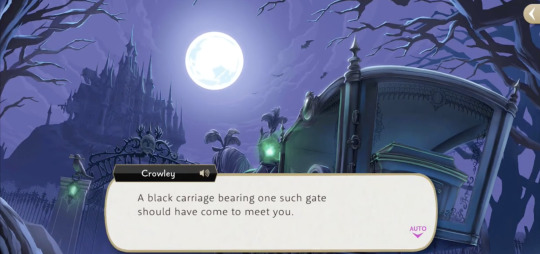

Death has never been a subtle theme in Twst, with new students at NRC arriving via coffins.
Kalim observes that, with the ceremonial robes they wear to orientation, "it's like we're attending a funeral."

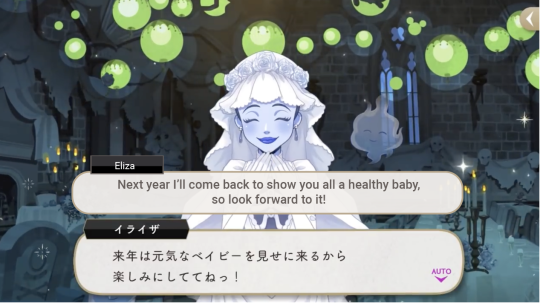
And there are also the ghosts!
While it seems possible to be born as a ghost (according to Crowley and Eliza), Lilia says that ghosts "linger here due to powerful attachments or personal motives...they aren't visible outside of magically suffused locations like Night Raven College," and that they "linger" by choice.

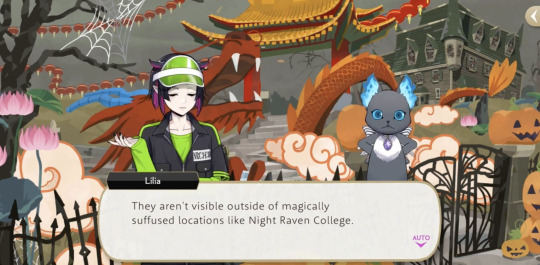
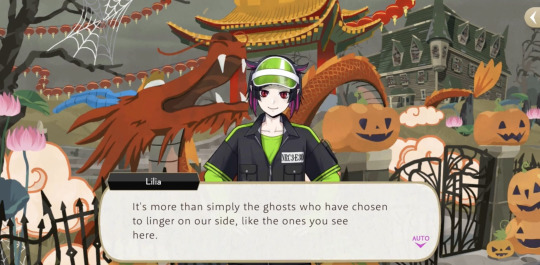
And this brings back to the prefect!
In the manga, all three prefects that we have seen thus far have had names connected to the afterlife:
・Heartslabyul Arc, Enma Yuuken (円満 雄剣): Enma's family name is pronounced the same (the kanji is different) as 閻魔 (Enma), the king of hell in Buddhism.
From the Kyoto National Museum website: "The King of Buddhist Hell is Enma, who is also the judge of the afterlife."
・Savanaclaw Arc, Hirasaka Yuuka (比良坂 悠河): "Hirasaka" is written and pronounced the same as the hirasaka of Yomotsu-hira Saka, known as "The Entrance to the Underworld" in Shintoism, explained on Shimane Prefecture's official tourism website: "Yomotsu-hira Saka appears as the boundary between the land of the dead and the land of the living."
・Octavinelle Arc, Mito Yuuta (三途 宥太): "Mito" uses the same kanji as 三途川, the "River of Three Crossings," which is "a mythological river the souls of the deceased must cross by one of three crossing points."
Credit to blogger Tansho for the discovery that "River Styx" was changed to 三途川 in the Japanese-language dub of the "Hercules" TV show.
So there is definitely a theme of the prefect filling a role between life and death!
While one theory is that the prefect ended up in Twisted Wonderland after they died (in the manga it is insinuated that all three prefects were hit by vehicles directly before waking up at NRC), another theory is that they're not quite dead yet.


If that is the case then they may be close (Grim wakes them up prematurely, and Crowley says that this is his first time having a student who opened their "gate" (coffin) on their own) and they might just be an astral projection of someone who is between life and death, appearing at the magically suffused location that is NRC.
In other words, a ghost 👀

The manga is following a theme of naming its characters something involving "Yuu" (which is always the students' nickname for them) and "Yuu" is also commonly adopted as the default-name for the game's prefect.
Another word that involves a "Yuu" sound is 幽霊 (Yuurei), which means: ghost :>
(Hence the name of this blog! It is the very chuunibyou name of a twitter account I made in 2018 to complain about my job. This potential connection to Twst was completely unintentional and makes me laugh.)

As for why the prefect was named Prefect of Ramshackle dorm instead of Housewarden: I am not sure! But it seems to have something to do with the unique situation that is the prefect's role.


They have not technically been assigned to the overseeing of the dorm as a whole, just to Grim, so maybe that is why? :>
And it is particularly interesting as that means that the role of Housewarden of Ramshackle Dorm is still open--maybe to be filled some day...? 👀
192 notes
·
View notes
Text

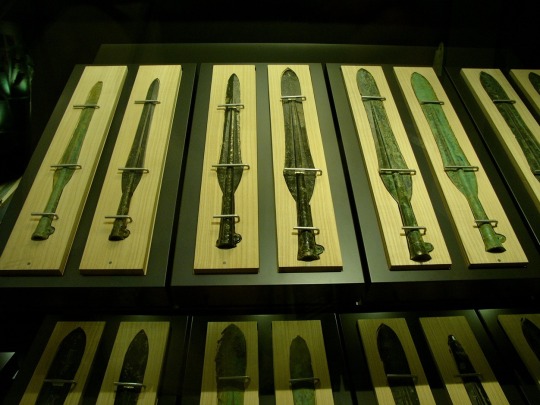

The Kojindani Sword Find,
In 1983 some construction workers near Kojindani, Japan were busy building a logging road when they stumbled upon one of the greatest archaeological finds of Japanese history. The area around Kojindani is known for many Yayoi Period ruins and sites, however this find would become a national treasure of Japan. Discovered at the site was a hoard of bronze weapons, 358 swords, 16 spearhead and halberds, as well as 6 bronze bells. The Yayoi Period (300 BC - 300 AD) is a little known period of history and not a lot of written records exist from the era. The Kojindani sword find is important for fleshing out a little known era of Japanese history.
The swords themselves were found stashed in eleven rows, almost as if in storage.

None of the swords or other weapons were sharpened, leading to the theory that they might not have been actual weapons but ceremonial pieces. They could also have been blanks, saved to be sharpened some time in the future. Each measure between 50 to 53 cm’s long (19 - 20 inches). Today the entire collection is housed in the Shimane Museum of Ancient Izumo. At the Kojindani sight itself the swords, spearheads, and bells have been replaced with realistic looking replicas.
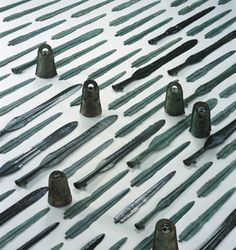
243 notes
·
View notes
Text
Its #BatAppreciationDay so please appreciate this awesome 19th century Japanese kosode decorated with embroidered lucky bats, photographed in 2019 at The Life of Animals in Japanese Art exhibition at the National Gallery of Art in DC:

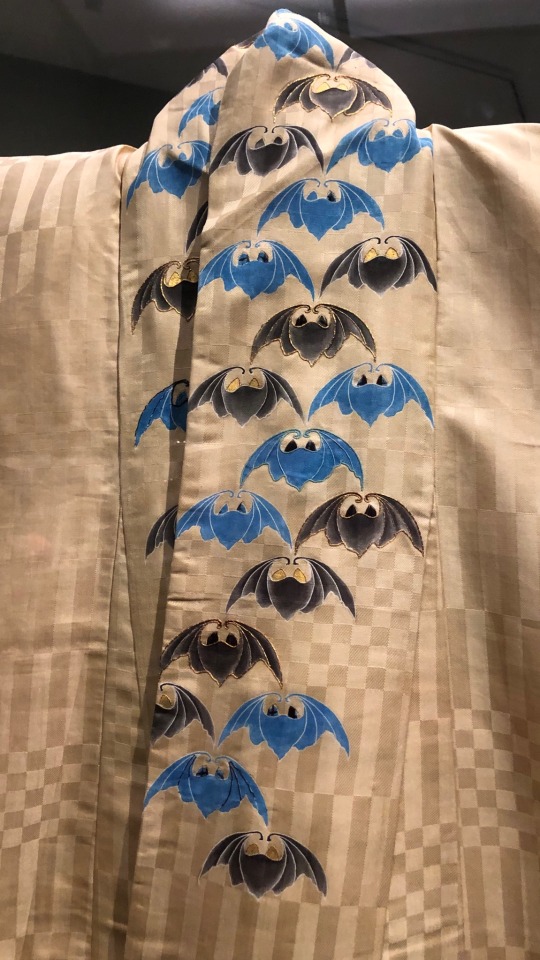


Kosode with Bats
Japan, Edo - Meiji periods, 19th century
silk twill, paste-resist dyed, embroidery, 67⅜ × 48⅞ in.
National Museum of Japanese History, Chiba Prefecture
“In the West, bats - nocturnal in habit and denizens of dark places tend to be viewed as unlucky, but in China they have long been considered an auspicious motif (one of the characters used to write the word "bat" is a homonym for good fortune). The Kabuki actor Ichikawa Danjüro VII (1791-1859) used bat motifs in his costumes, and the perception of these animals as a chic design element spread rapidly throughout Japan in the nineteenth century. Here a great number of them are arranged in right-left symmetry from the base of the collar to the hem.”
The above info is from the official exhibition catalog - this bat kosode is on p. 124:
The Life of Animals in Japanese Art (2019)

#bat#bats#bats in art#animal holiday#Bat Appreciation Day#International Bat Appreciation Day#The Life of Animals in Japanese Art#exhibition#museum visit#National Gallery of Art DC#book recommendation#Amazon Associates#kosode#historical costume#Japanese costume#Kabuki#Japanese art#East Asian art#Asian art#19th century art#garment#embroidery#auspicious symbol#animal iconography#animals in art
579 notes
·
View notes
Text
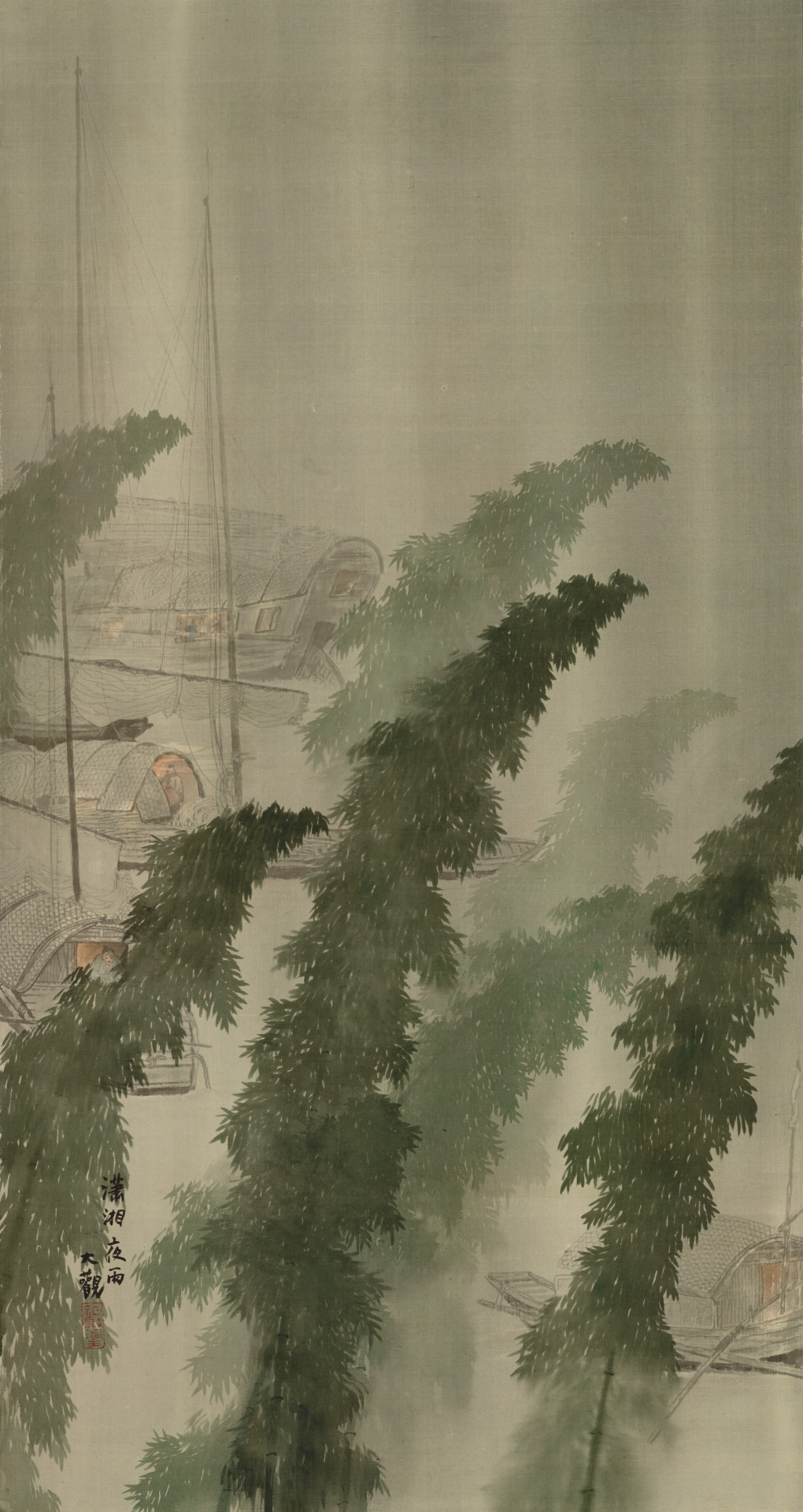
Night Rain over Xiao & Xiang (from Eight Famous Sights of the Xiao River and Xiang River), Yokoyama Taikan, 1912
#art#art history#Asian art#Japan#Japanese art#East Asia#East Asian art#nihonga#Yokoyama Taikan#landscape#landscape painting#rain#rain scene#night scene#20th century art#Tokyo National Museum
480 notes
·
View notes
Text
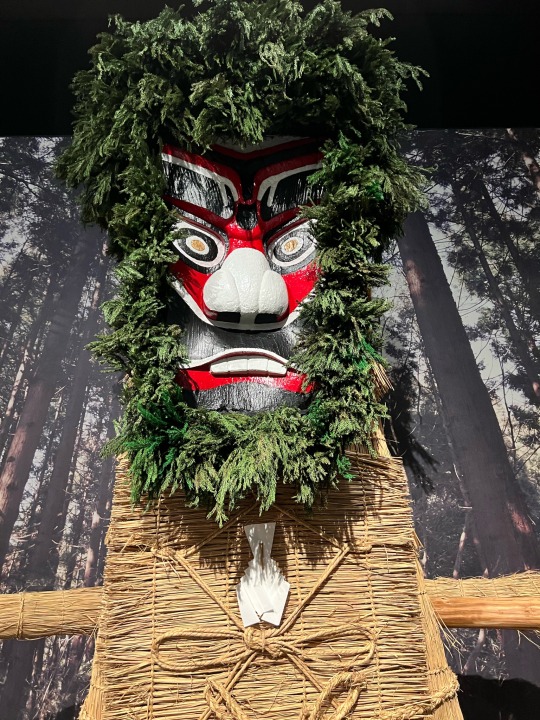
国立歴史民俗博物館

0 notes
Photo

Kujaku Myouō, 12th century
Heian period, Japan
Hanging scroll; colour on silk
147.9 x 98.9 cm
Kujaku Myôô (Skt. Mahamayuri vidyaraja) is the deified form of a peacock that eats poisonous snakes and insects. He is represented here in compassionate form, an aspect unusual for Radiant Wisdom Kings (Skt. Vidyaraja, J. Myôô). Kujaku Myôô is the principal deity of an esoteric Buddhist ritual based on the Kujaku Myôô sutras that is performed to bring or stop rain, to ward off calamities, and so on.
The Myôô sits on a peacock with a wide plume of tail feathers. In the first right hand he holds a lotus flower, and in the second right a fruit that resembles a watermelon. In his first left hand is a pomegranate, and in the second left five peacock feathers. The picture plane is filled with the Myôô and the peacock presented in full frontal pose, together with the jeweled vases placed in the four corners. In some respects, this is much like the painting style of a mandala and displays the traditional composition of works brought from China by the founder of the Shingon sect, Kûkai (774-835).
The body of the Myôô is white, to which in places faint pink has been applied and outlined in vermilion. His clearly shaded, contoured robes are in colors including peach, orange, vermilion, and green. Moreover, gold foil has been cut thinly and applied as lines to the robes, which are also studded with patterns of delicate cut gold (J. kirikane). Cut gold is also employed in his adornments and elsewhere. The peacock and the mandorla are painted with various opaque colors including green, blue, vermilion, and gold. This excellent and beautifully refined technique of color application developed during the Insei era at the end of the Heian period (794-1185).
Collection of the Tokyo National Museum
Sources: Open Museum, Taiwan; Google Arts & Culture
#Mahamayuri#vidyaraja#bodhisattva#peacock#Buddhism#religion#figure#iconography#Tokyo National Museum#cultural amalgam#flowers#lotus#gesture#feathers#gilding#12th century#Heian period#Japanese#art#art history#colour#fruit#pomegranate#symbolism#Shingon
16 notes
·
View notes
Text





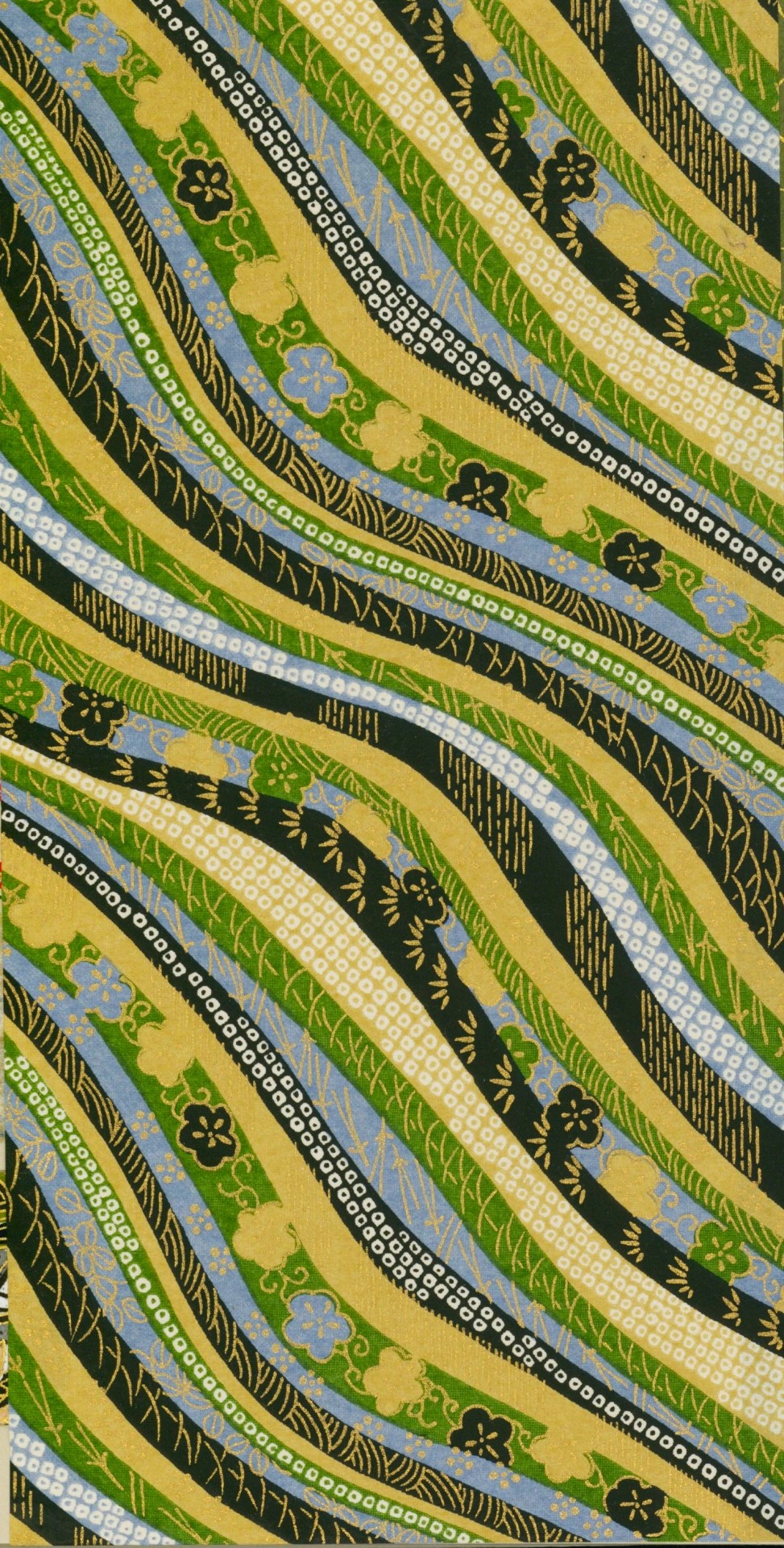

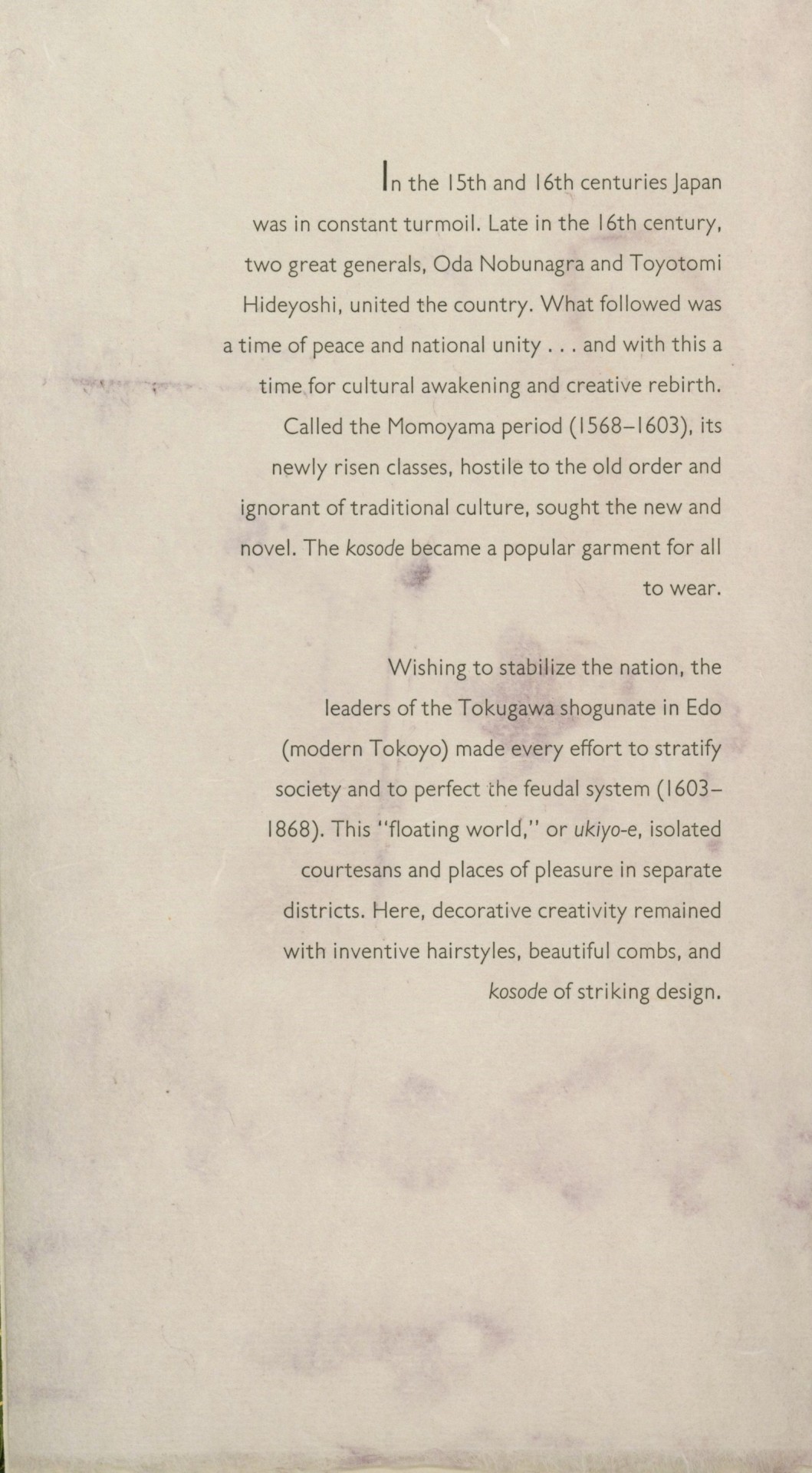

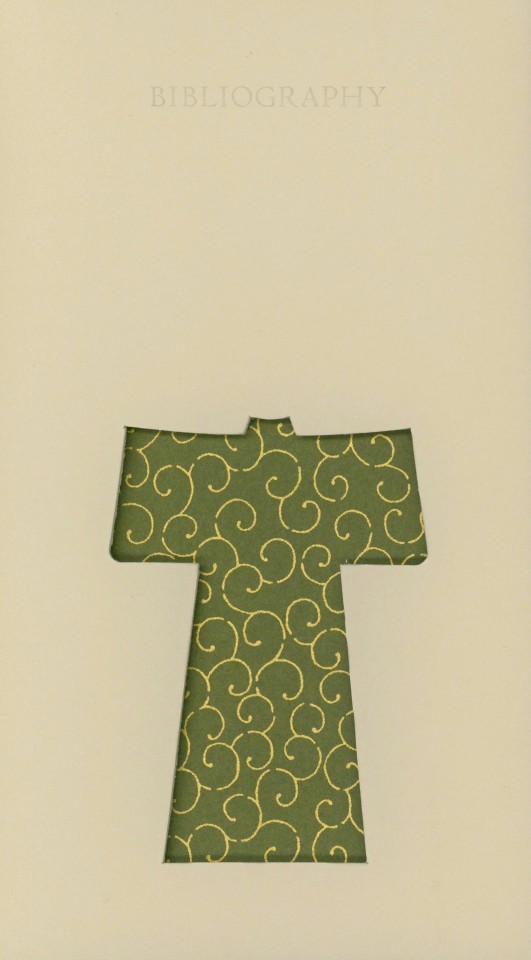
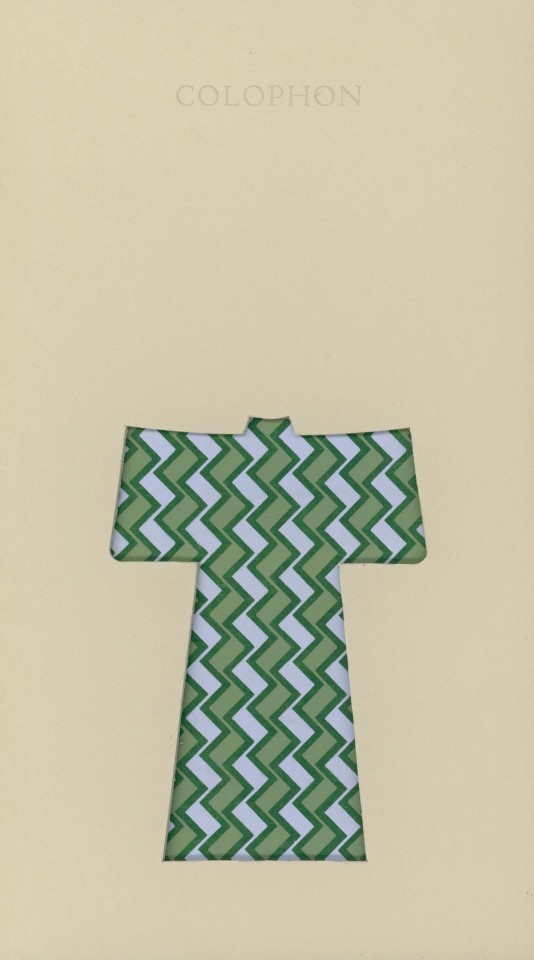
Staff Pick of the Week
For today’s staff pick, I want to share another book from the collection of our late friend Dennis Bayuzick, entitled Kimono| Kosode: A Decorative Study of the Kimono. Designed and bound by Carol Schwartzott (b. 1945), this book uses Japanese Chiyogami paper as the ‘fabric’ for the kimonos between archival boards throughout the book. The book explains to readers the history of the Japanese kimono’s creation and augments the information with beautiful decorative elements. Each fold-out includes a cut-out kimono as well as a heading and short section about the topic introduced in the heading. Another interesting feature of this book is its binding; it uses a piano-hinge binding designed by Hedi Kyle (b. 1937) and the patterned paper can also be seen wrapped around the dowels that make up the binding.
The book discusses the origins of the kimono, which was once called a kosode, and goes into detail about the historical periods when the garment gained popularity, explaining how “[with] each period in history, the kosode evolved, adapting its design and decorative elements to current style…”
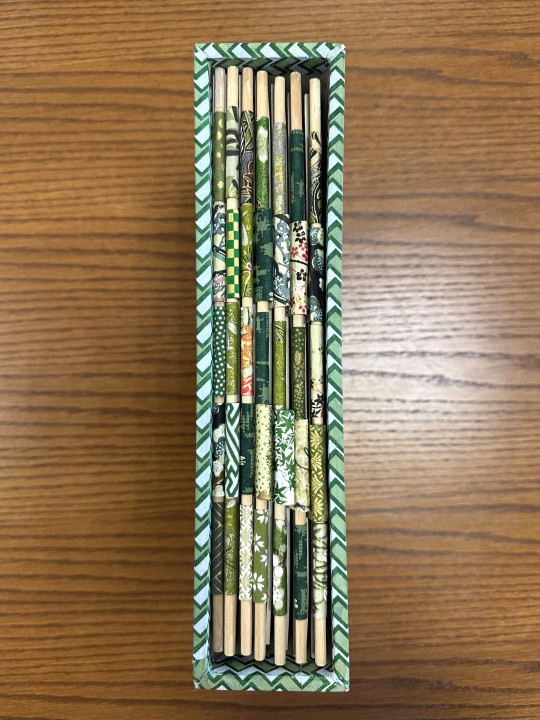
Printed in an edition of 125 copies by Blacks Corner Letterpress with Monotype Gill Sans Light cast by the Bixler Press & Letterfoundry, this book was created for the Library Fellows of the National Museum of Women in the Arts in Washington DC in December of 2001.
View more Staff Picks.
View other books from the collection of Dennis Bayuzick.
– Sarah S., Special Collections Graduate Intern.
#staff pick of the week#kosode#kimono#national museum of women in the arts#Dennis Bayuzick#Carol Schwartzott#Japanese Chiyogami paper#japan#piano binding#Hedi Kyle#Blacks Corner Letterpress#Monotype Gill Sans Light#Bixler Press & Letterfoundry#Sarah S.
85 notes
·
View notes
Text

Why These Imperfect Korean ‘Moon Jars’ Sell for Millions
Old, round, imperfect and beautiful — that’s how fans of Korean art describe the moon jar, or “dalhangari.”
These unassuming, plain white pots have entranced everyone from rapper RM, of K-pop sensation BTS, to philosopher Alain de Botton.
The former director of London’s Victoria and Albert Museum, Beth McKillop, has called the moon jar an “icon of Korean identity.” And if price is any indicator of popularity, one recently sold for over $4.5 million at a Christie’s auction.
This month, a rare example from the late 17th or early 18th century will go on sale at Sotheby’s in New York, where it’s expected to fetch more than $3 million.
“A large moon jar has always been expensive, but I think the big uptick in prices and value is… because their appeal is now global,” said Angela McAteer, Sotheby’s international head of Chinese art for the Americas and Europe, over video call. “You’ve got an international cohort of bidders competing for them, so it’s gone beyond the traditional connoisseur collecting community of Korean art.”

Huge price tags also result from the jars’ rarity. Although made for over a century in the royal kilns of Korea’s last kingdom, the Joseon dynasty, few are thought to exist today. Estimates for the number of larger ones (those more than 40 centimeters, or 15.7 inches, tall and wide) that have survived over the years range from 12 to 30.
Having passed through auction houses and antique dealers across the world, several of these are now in the collections of institutions like the British Museum and Boston’s Museum of Fine Arts, as well as in the hands of private collectors.
‘Owning a piece of happiness’
The first moon jars were created in the royal kilns in Gwangju (a city just outside Seoul, not the larger southern city of the same name) from 1650 to 1750. They were made from pure white porcelain and kaolin clay, and, following the neo-Confucian fashions of their day, the pots reflected values such as propriety, humility, frugality and purity. They were likely used at court and in upper-class homes as containers for food and liquids, or as decorative vessels.
In the mid-20th century, moon jars began gaining international appreciation thanks to influential admirers such as Japanese folk crafts scholar Yanagi Soetsu and British potter Bernard Leach, who bought one from a Seoul antique store in 1935. Leach once said that having a moon jar was like “owning a piece of happiness,” and would later give his to fellow potter Lucie Rie for safekeeping during World War II. It stayed in her studio until her death and was later acquired by the British Museum.
Charlotte Horlyck, lecturer in Korean Art History at the University of London’s School of Oriental and African Studies, wrote in the Art Bulletin journal that after World War II the moon jar “caught the attention of an early generation of postcolonial Korean artists and scholars who sought to restore Korean art history and national identity,” as the pieces “resonated with the visual language of international modernism and minimalism of the mid-20th century while remaining a distinctly Korean work of art.”
The moon jar’s allure
When Sotheby’s announced its forthcoming sale, the auction house described its 44-centimeter (17.3-inch) moon jar as an object that inspired, astounded and soothed those who “stand in its presence.” It’s a funny thing to say about a pot, to speak as if it’s alive, but the jars’ visceral, emotional impact on people is something that comes up time and time again in the literature.

Choi Sunu, a former director of the National Museum of Korea, has described the museum’s moon jars as being like companions, or muses that have inspired his writing and stirred his creativity. Bernard Leach admired the pots for their “natural unselfconsciousness.” In 2012, South Korea’s then-Unification Minister Yu Woo-ik used the pot as a metaphor symbolizing a reunified Korean peninsula (moon jars are created in two hemispherical pieces and joined in the middle).
More recently the rapper RM, of K-pop group BTS, posted a picture of himself hugging a modern-day moon jar on Twitter, telling fans that the pots made him feel calm.
“It’s hard for someone to really comprehend how a pot can make you feel that way,” said McAteer. “It has this real meditative presence. If you’ve sat in front of a great (painting by US artist, Mark) Rothko and you feel this kind of palpable energy emanate from it, and you could sit for hours and just feel something in its presence — the moon jar has that too.”
“The more you look at it, the more there is to see. It looks different from every angle,” she added. “We had real issues with the photography and the catalog because it looks like a different piece every time you rotate it, or you change the lighting. The surface is just alive, you know.”
“You can see how the glaze coalesces; you see these spontaneous bursts of this blush color that’s happening in the firing. You can lose yourself in its surface.”
Modern masters
Modern Korean potters have been inspired by the jars, and a number have come up with their own homages. Ceramist Kim Syyong covers his pots with a black glaze, while Yun Ju Cheol’s versions look spikier like a pufferfish and Choi Bo Ram’s unvarnished, textured blue vases have a denim-like quality.
Others, like Kwon Dae Sup, have looked to closely recreate the process used by the potters of yore. The 71-year-old ceramist produces unadorned white jars and allows for all the beautiful imperfections produced to shine through. He works out of a studio in Gwangju, where the royal kilns that produced moon jars were once located.



There’s a great deal of preparation that goes into making a moon jar traditionally. It’s labor-intensive: washing, sifting impurities from the clay, kneading and rolling it to remove air bubbles, carrying around these large hunks, not to mention hand throwing the clay itself to that oversized bowl shape without collapsing, and the work keeping a pine wood fire burning for 24 hours while the pot hardens in the kiln. Kwon also built his own kiln to replicate the old process as closely as possible.
“I do this because it’s fun,” he said in a phone interview. “Every time I make something, it’s novel … The quality of the material is different every time. The conditions in which I make the pots is new every time.”
Kwon said he also feels an emotional connection to the moon jar. As a student he was so moved by a one he saw in a Korean antique store that he decided they would be his life’s work. “They feel alive,” he said.
In a 2019 book on his work by Axel Vervoodt Gallery the potter is quoted saying he tries to produce art that needs no addition or subtraction. “I wish to create work that has an imposing presence but harmonizes with its surroundings regardless of where and when it is displayed. It should give peace of mind and a sense of comfort to all who look at it.”
By Christy Choi.
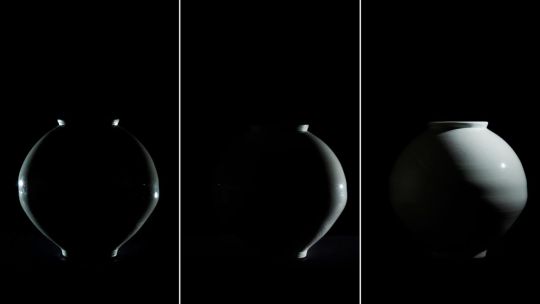
#Moon Jars#Why These Imperfect Korean ‘Moon Jars’ Sell for Millions#Dalhangari#Joseon dynasty#pottery#porcelain#Bernard Leach#Lucie Rie#Kwon Dae Sup#ancient artifacts#archeology#archeolgst#history#history news#ancient history#ancient culture#ancient civilizations#korean history#korean art#art#artist#art work#art world#art news#long reads
127 notes
·
View notes